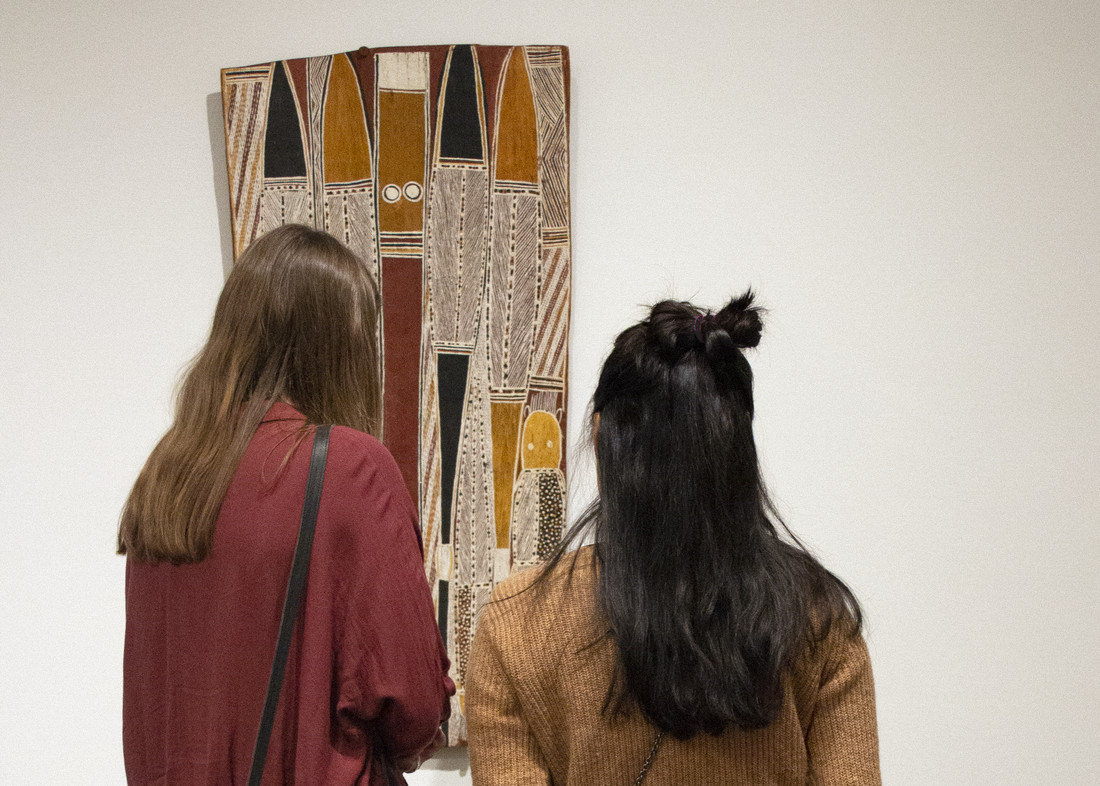When scientists in the Straus Center for Conservation and Technical Studies launched the first ever large-scale technical examination of Indigenous Australian bark paintings, they were unsure of what they would find. They started with the widely held idea that bark paintings developed out of the tradition of creating short-term shelters in wet weather. For this reason, it was commonly thought that Indigenous artists would not have used binders, which are added to extend a pigment’s longevity. Today—3 years, 200 samples, and 50 paintings later—our team has strong evidence to question this belief.
Led by Narayan Khandekar, senior conservation scientist and director of the Straus Center, the study was undertaken in preparation for our upcoming special exhibition Everywhen: The Eternal Present in Indigenous Art from Australia (February 5–September 18, 2016). “For the first time,” Khandekar said, “we are able to provide physical evidence to support or challenge theories from the past.” In particular, the team found the first conclusive evidence that orchid juice was used as a binder in a two of the oldest known bark paintings, dating to the late 19th century.
Khandekar, along with colleagues Georgina Rayner and Daniel Kirby, also uncovered tantalizing clues about where Indigenous artists sourced their pigments. Traditional Indigenous painting uses only four colors—yellow, white, red, and black—derived primarily from minerals. The team carefully analyzed and mapped the elemental composition of pigments from bark paintings and then compared those pigments to ochres (earthen pigments) that the team had collected while touring Indigenous art centers and conducting artist interviews. The results showed that most of the pigments were indeed created from ochres. These preliminary findings inspire hope that researchers will eventually be able to add to an “atlas” of all Australian pigment sources, contributing to a greater understanding of the extensive ochre trade in Indigenous Australia.
The team discovered several non-traditional pigment sources as well. For example, some black pigments—black being a significant color for these artists—were derived from dry cell batteries in addition to ores and charcoal. The team also investigated two paintings from the 1920s that included silver paint, an unusual addition to the standard palette. Khandekar has a theory for the paint’s origin: a local lighthouse was surrounded by “cottages with corrugated roofs, and the tradition was to paint them silver; so it looks like the artists would get their silver paint from the lighthouse complex.”
These sorts of findings, slated to be published in the Everywhen exhibition catalogue, not only enhance our knowledge of the materials used, but also influence the ways in which we display, care for, and preserve the works for future generations. The research deepens our insight into the practices of Indigenous artists—a boon for both museum visitors and present-day Indigenous artists seeking to recover the techniques of their forbears.


